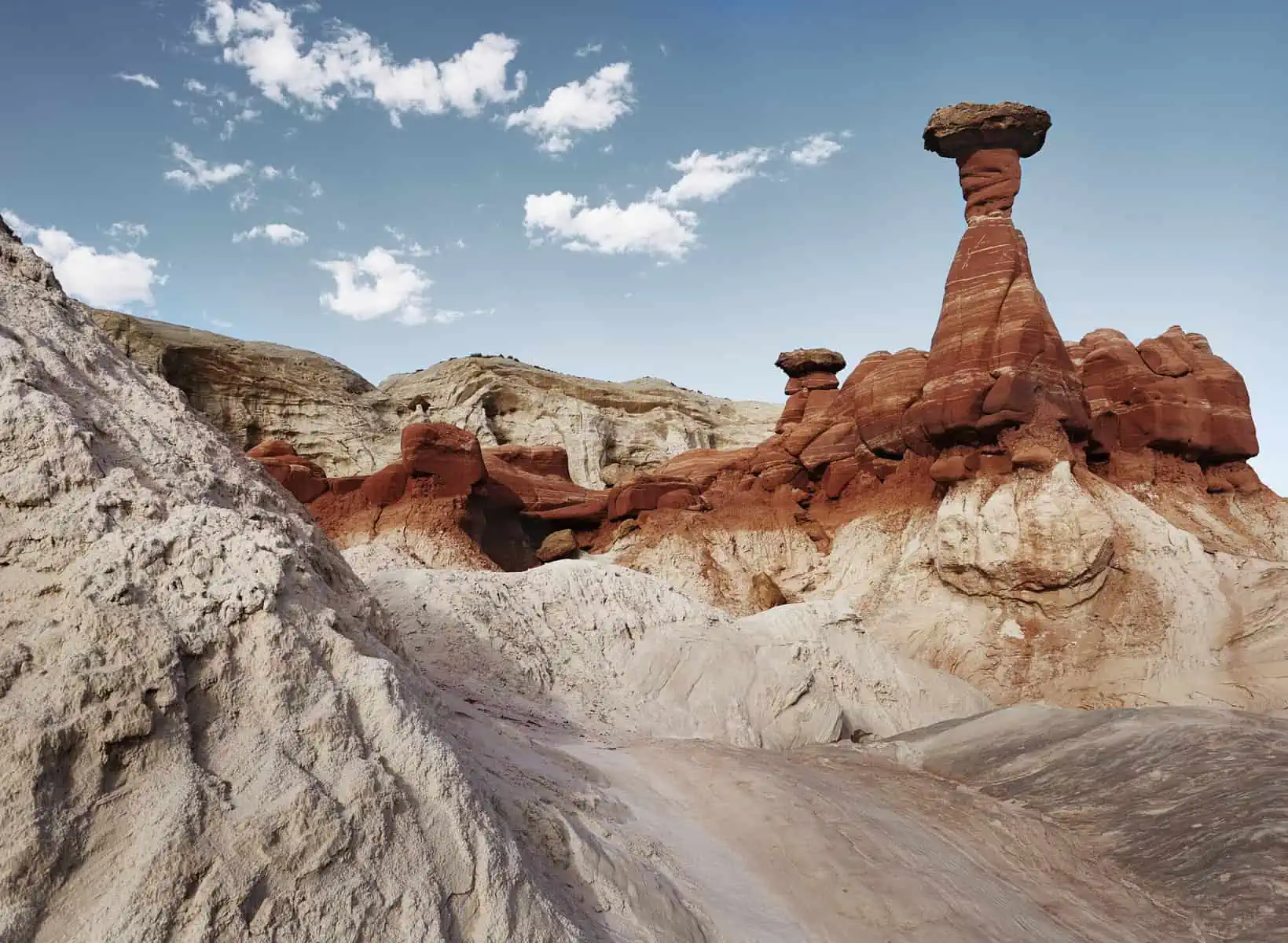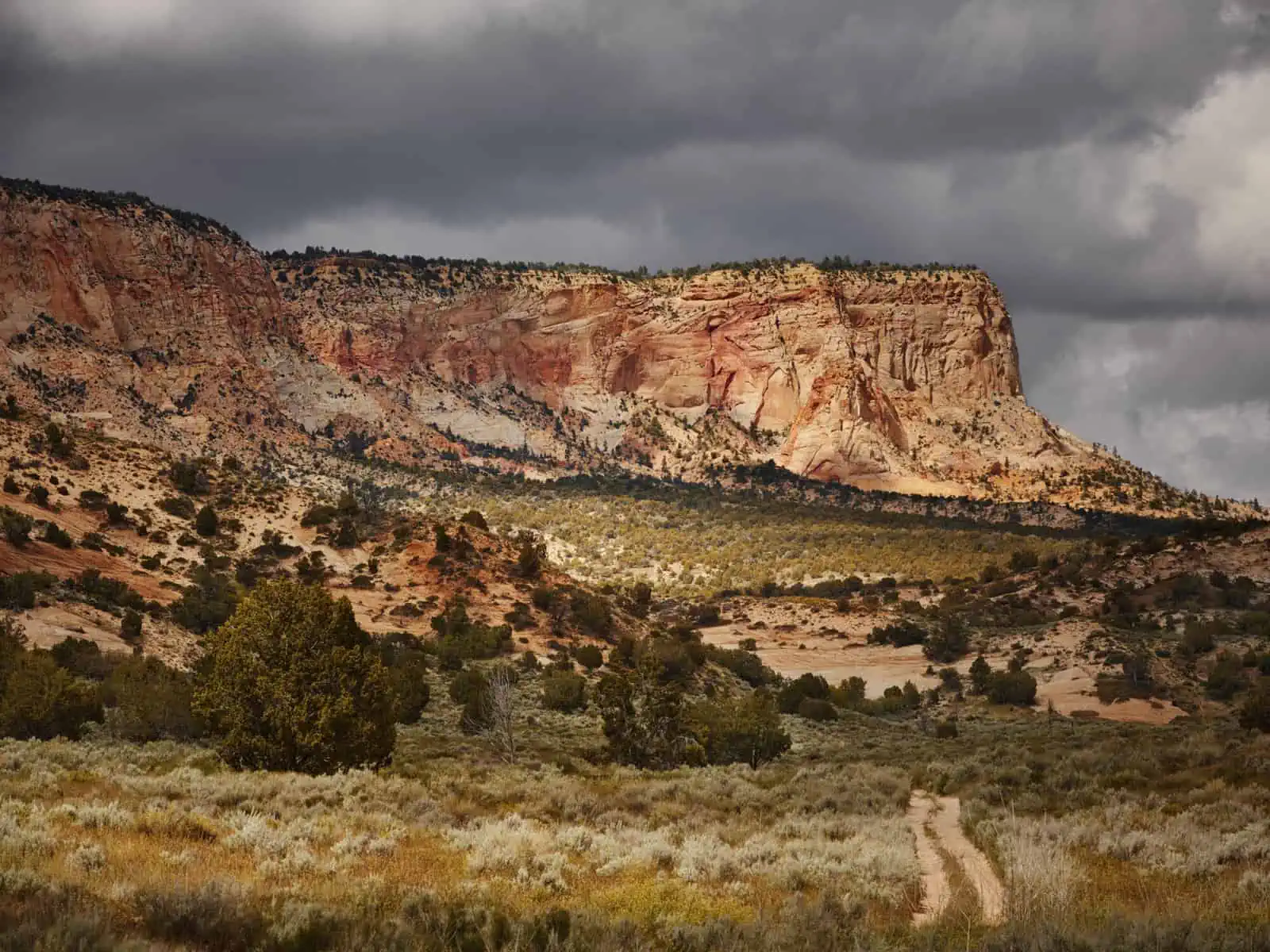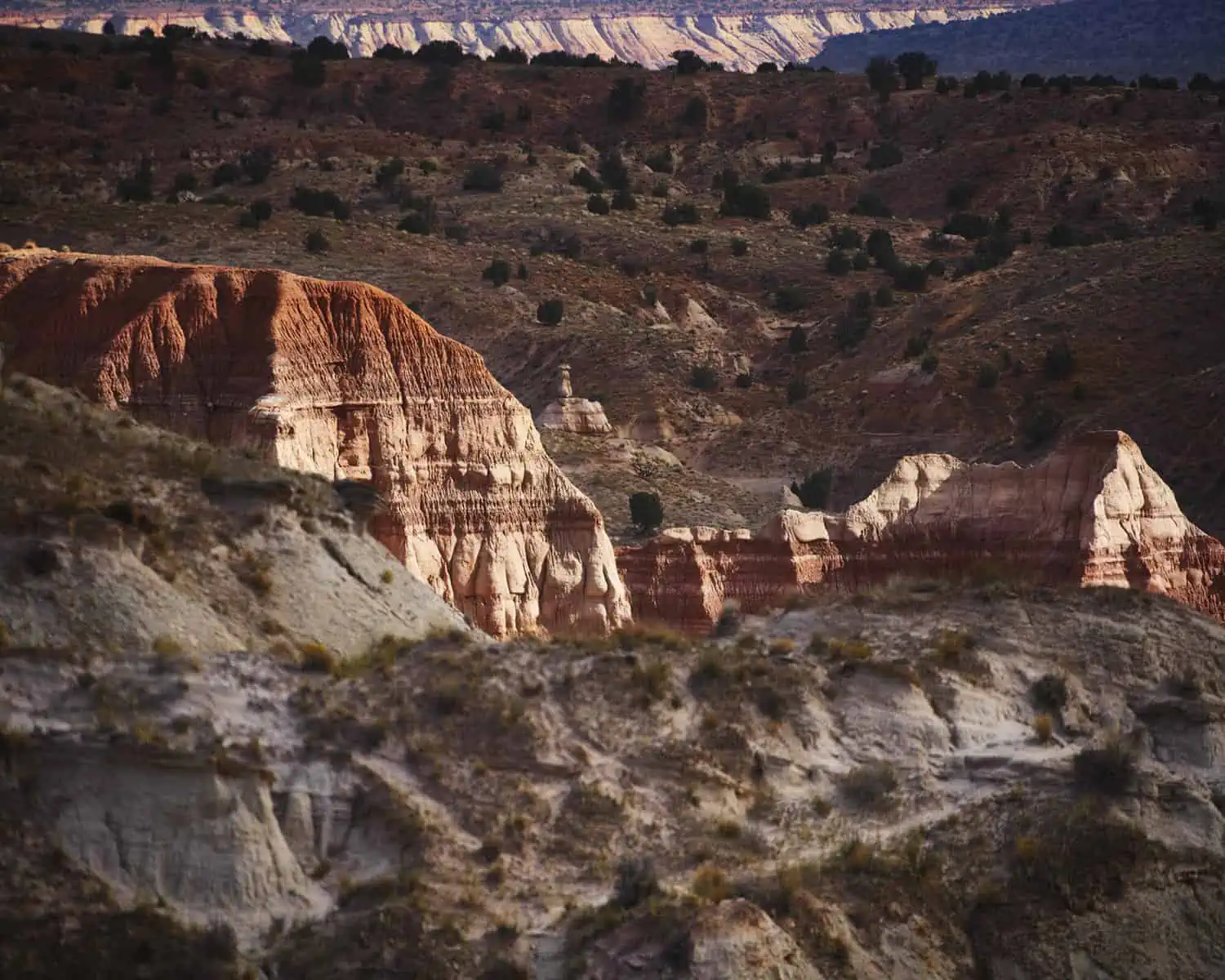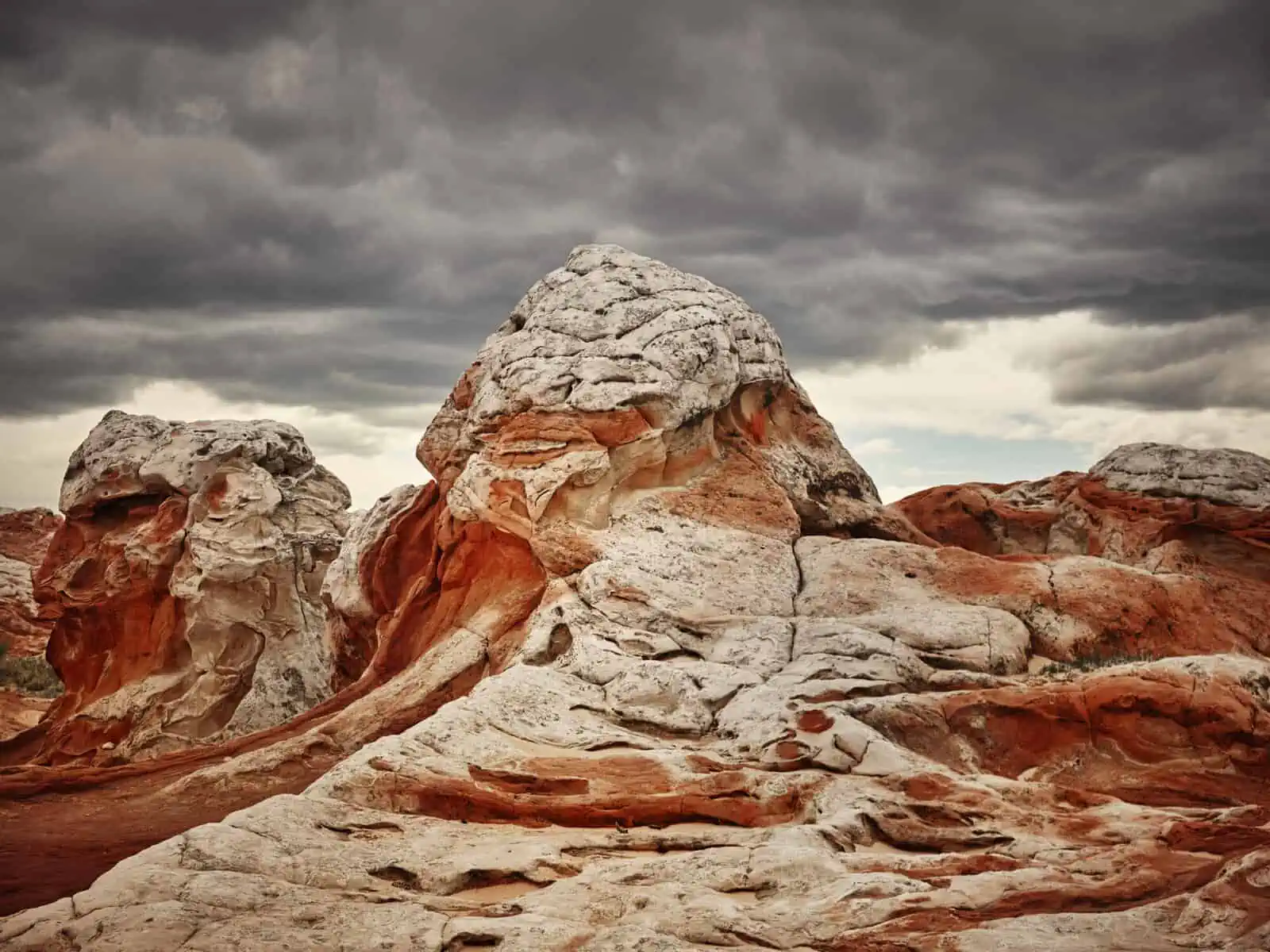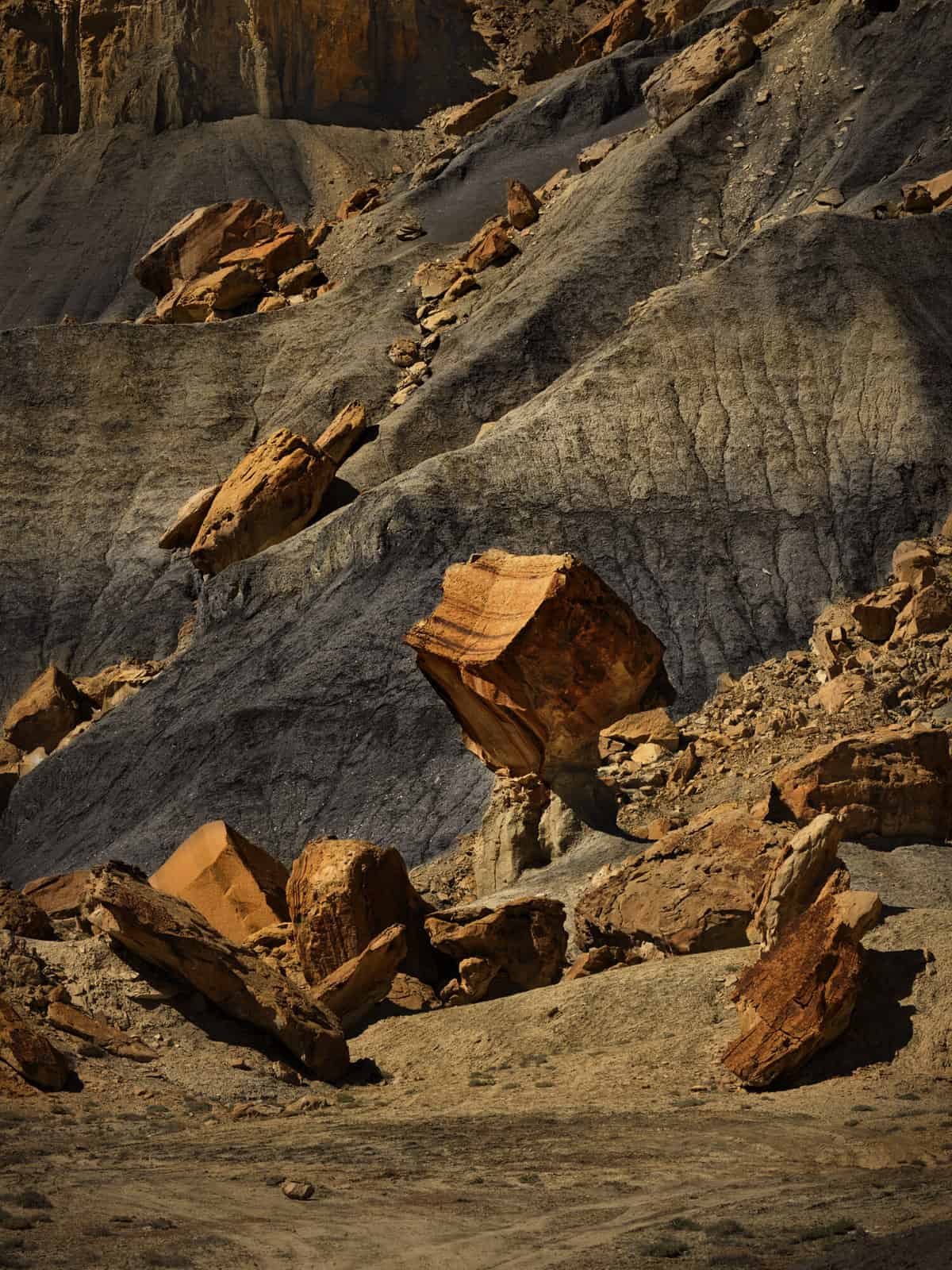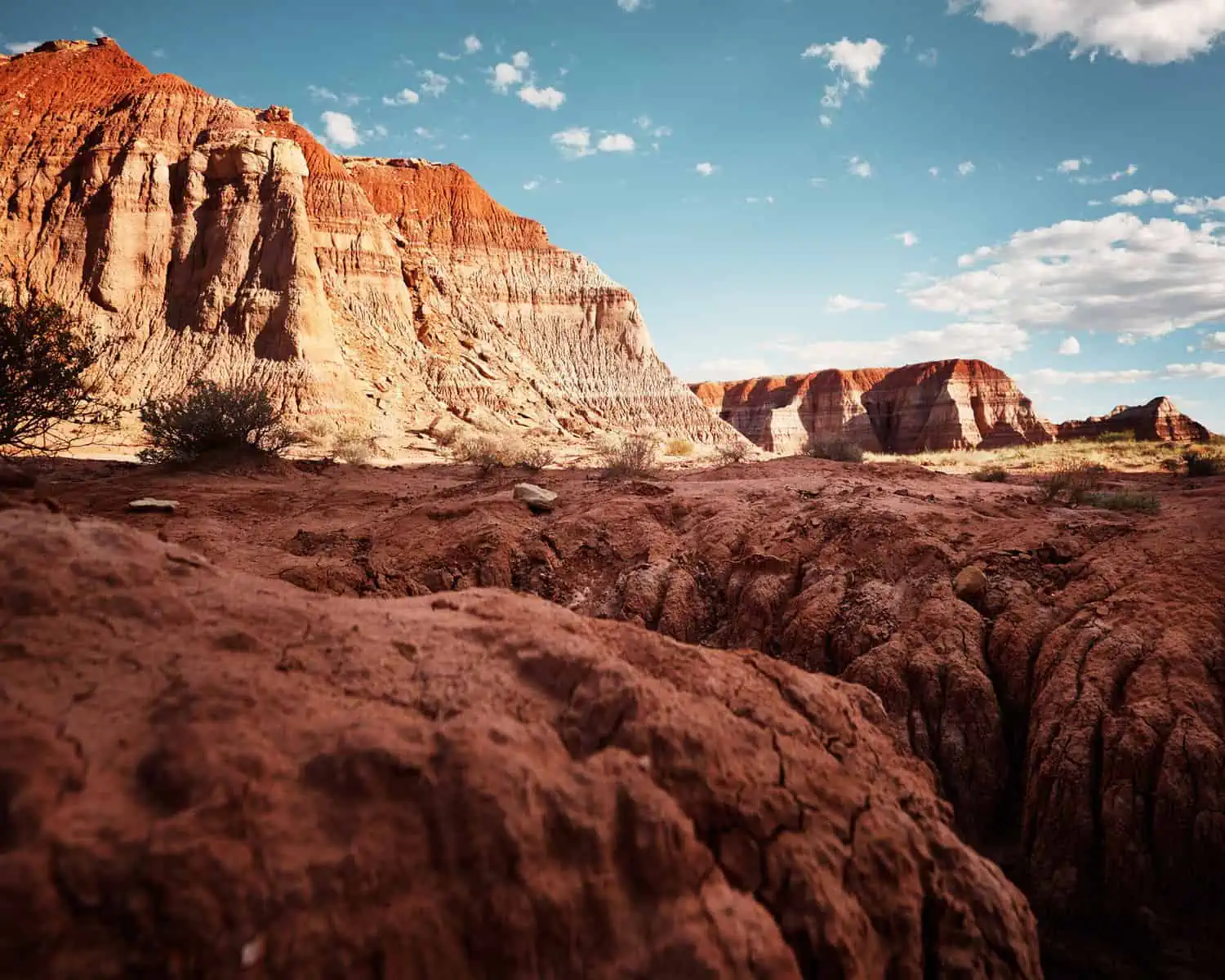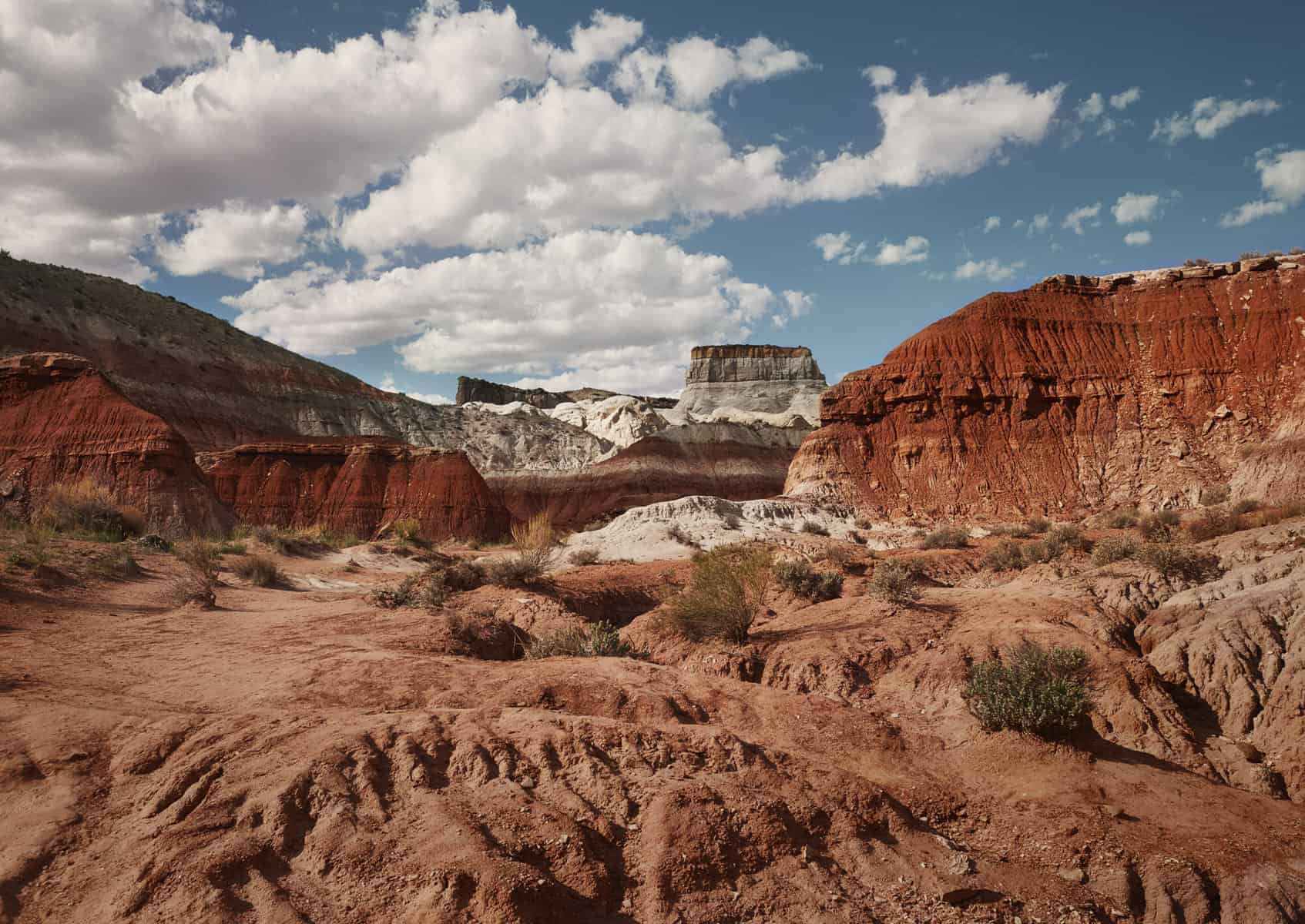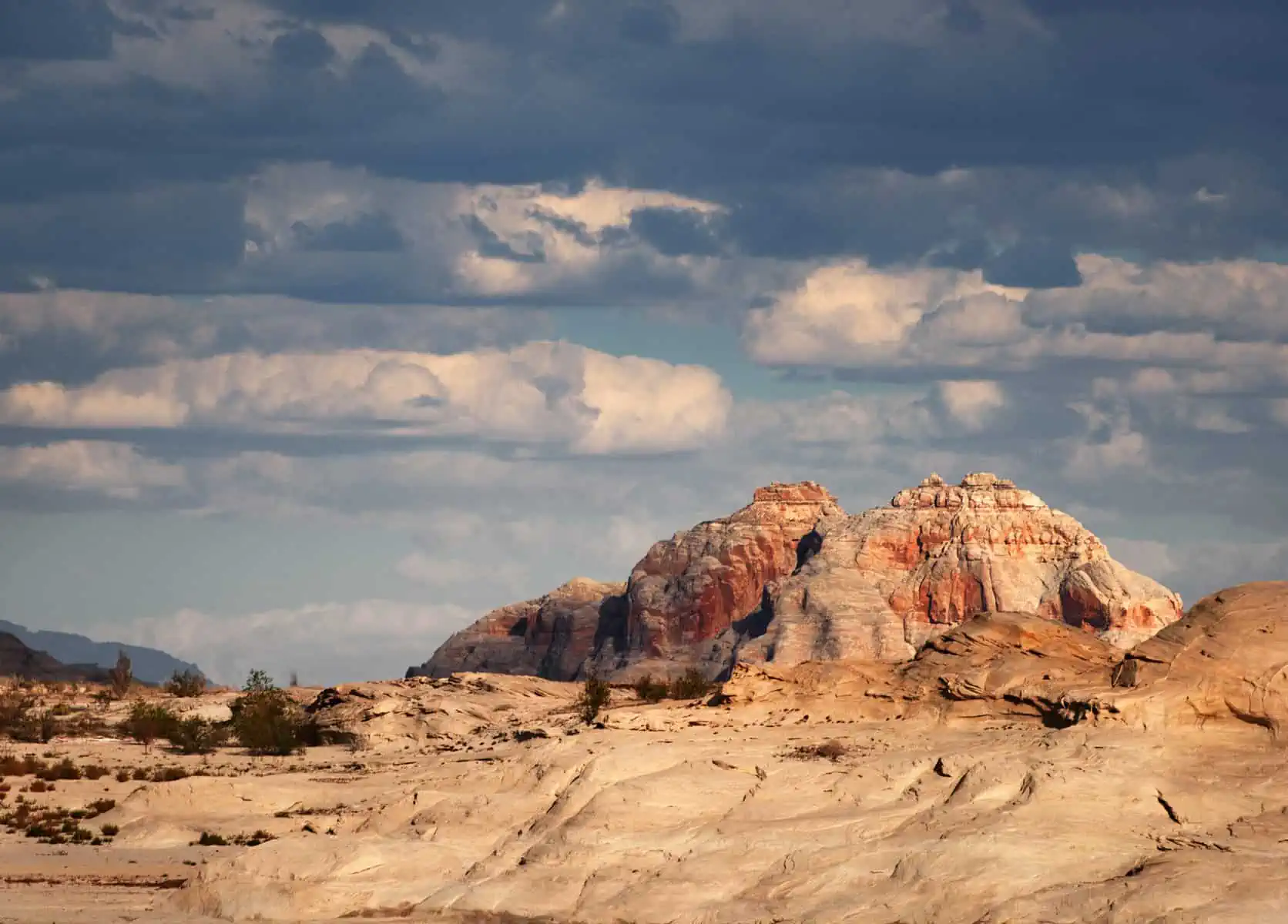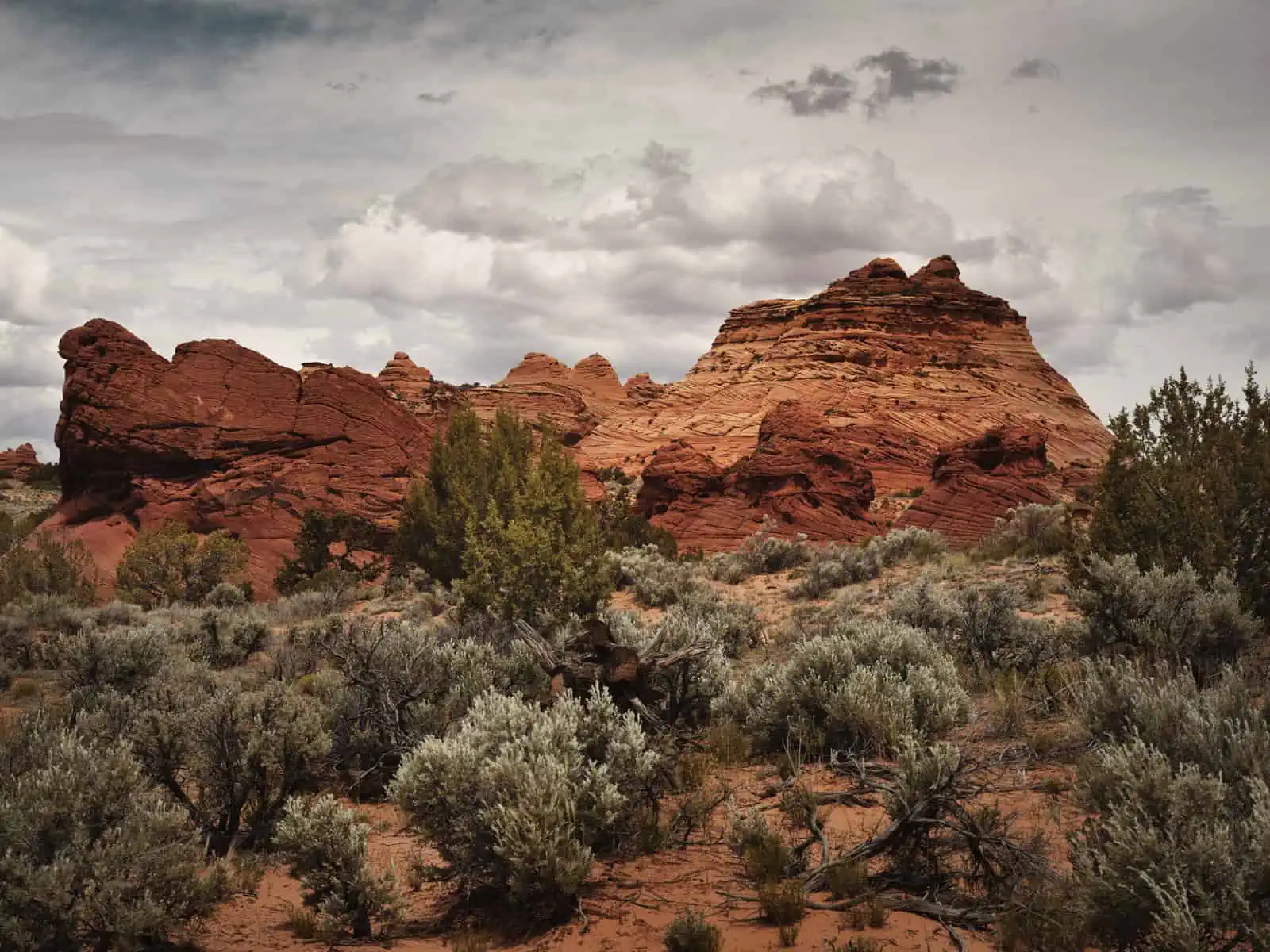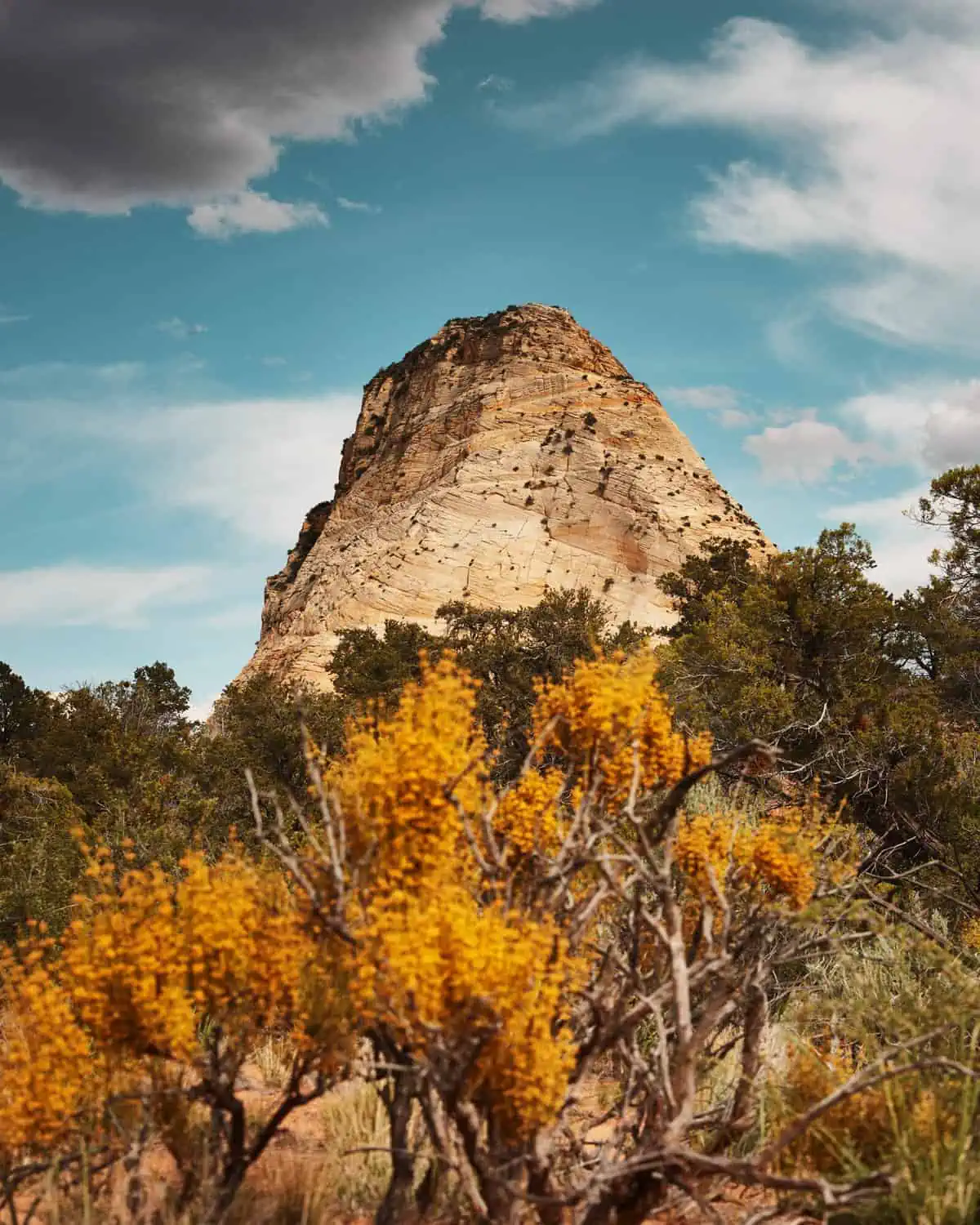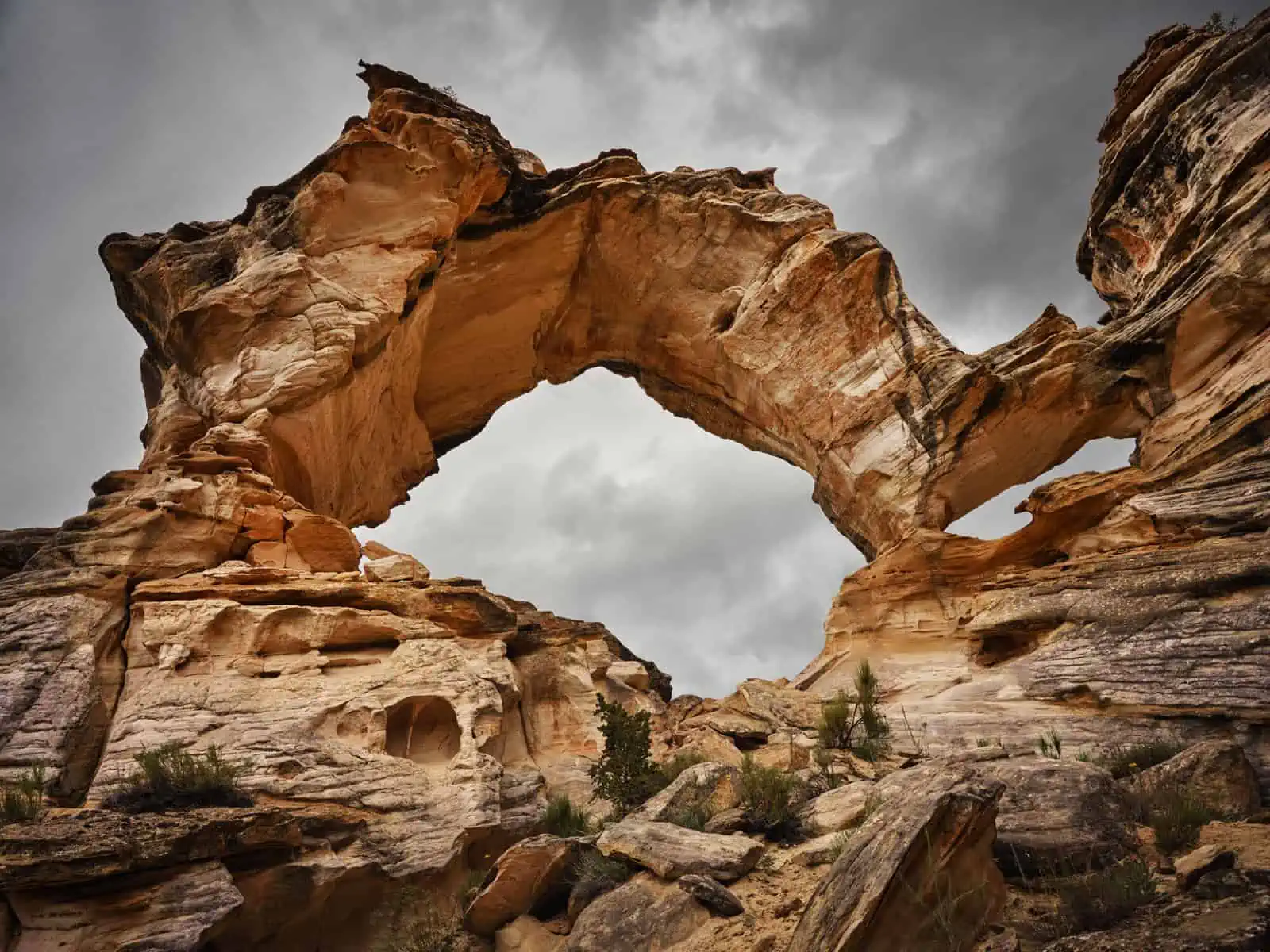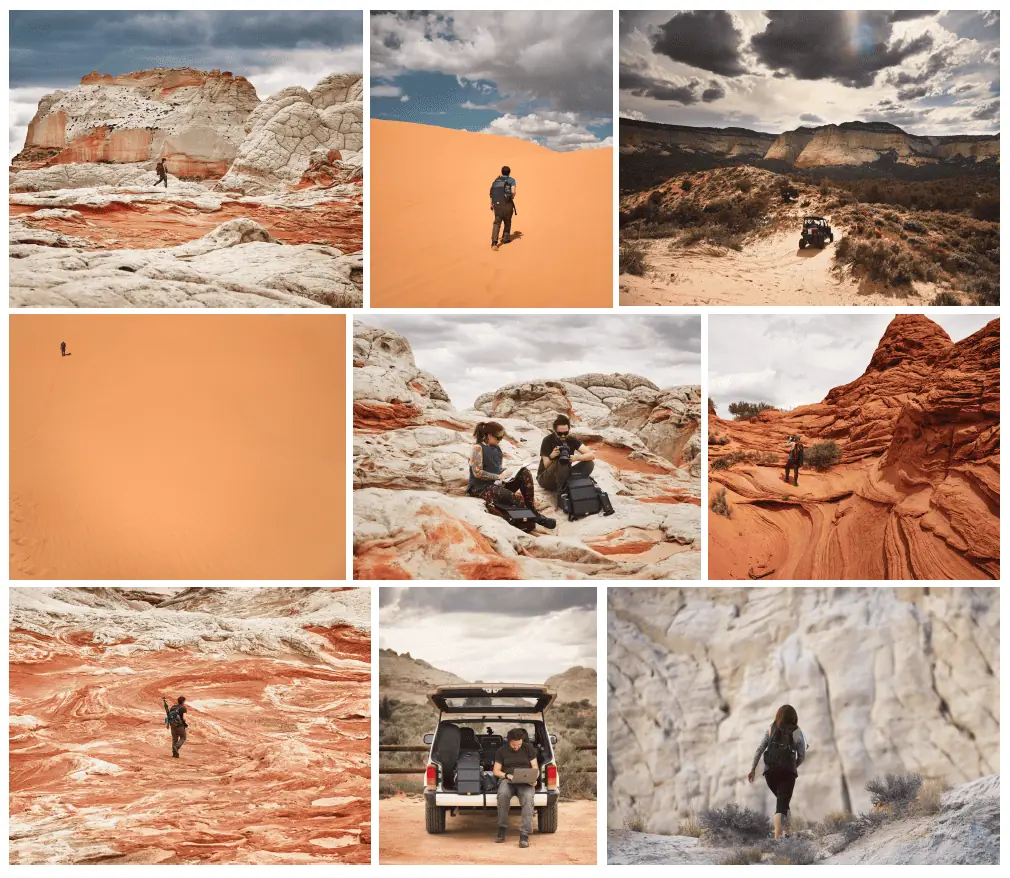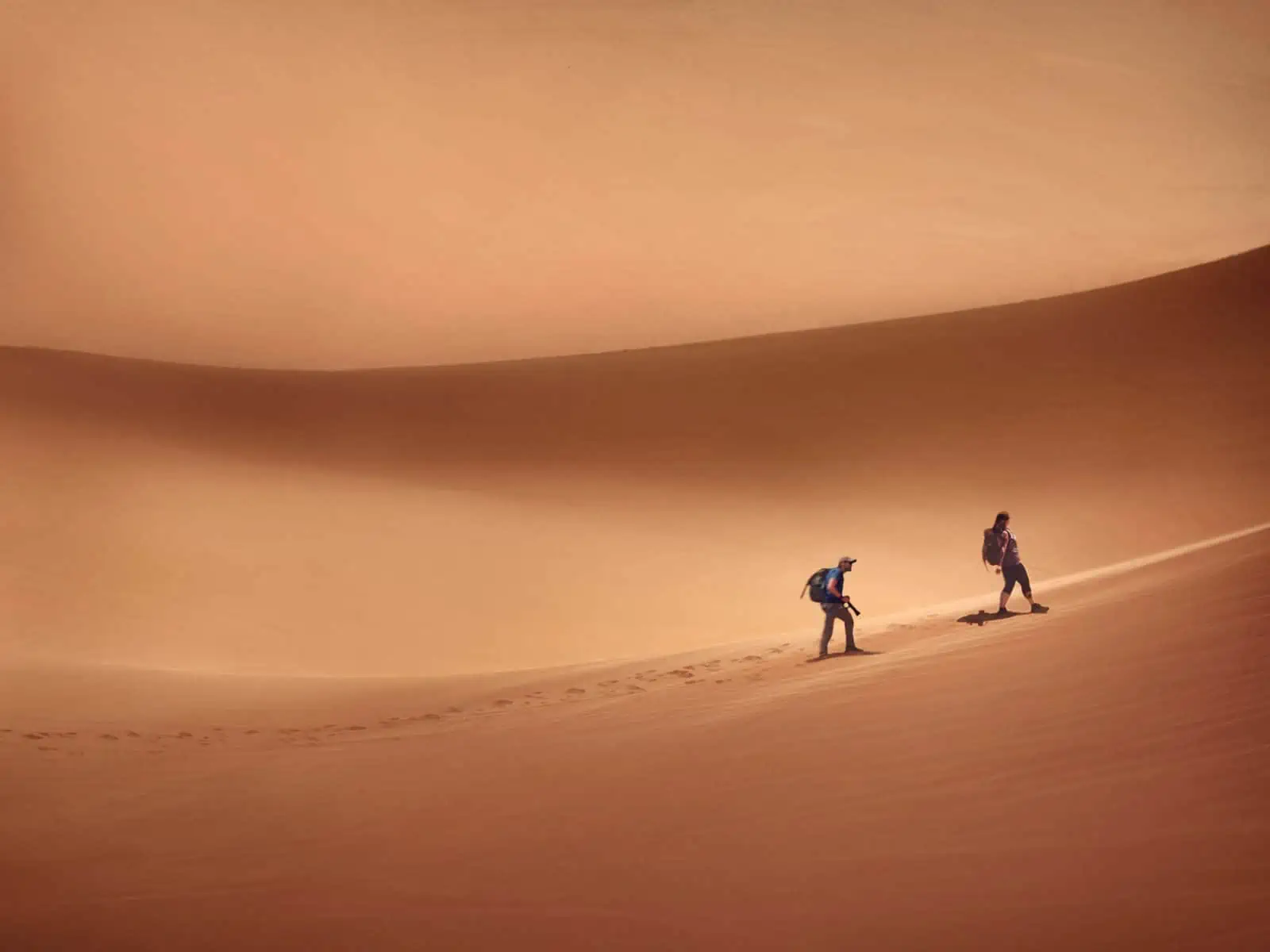Hidden Landscapes of the American West is a study and exploration of the public lands spanning Southern Utah and stepping briskly into Arizona (Nuwuvi Southern Paiute – stolen Native American land of the Paiute Indian Tribe). In this article, we’ll be looking into the project in more depth, what led us to the project and why Public Lands are important. The accompanying imagery you’ll see is from the project so far – and was first launched in our exhibition and Q&A about the project at Kendal Mountain Festival in November of 2019.
Utah was a place that had intrigued us for a long time. We’d seen photographs of other worldly landscapes in the likes of Zion, The Grand Canyon and Bryce Canyon. In researching, we’d found countless exploring and hiking opportunities in these areas and our excitement over the idea of visiting grew more and more. We planned out a trip, booked everything we needed and passed the time, in eagerness of our upcoming experience. We were very much at the early stages of our career within adventure photography, and at this point had never gone on any kind of ‘expedition’. Our hikes were kept to day ones and our exploration was mainly within contained areas, so to speak.
Our research had been easy – there was a wealth of information online about the ‘top hitters’ in terms of hikes in all of the National Parks and we set off armed with a plan of what we wanted to see and experience, carefully curated right to the dot. We were completely unaware of truly what was going to be there when we arrived.
We landed in Las Vegas, and drove further North to Utah, to within an hour’s drive of Zion National Park (stolen Native American Nuwuvi Southern Paiute land). We were incredibly excited. So far, we’d spent most of our time exploring The Alps, so to see the mesa’s that seemed hopelessly endless and feel the openness of the American country felt wild and expansive. At the same time, we’d been learning in much greater detail about stolen land and how much of Indigenous land was stolen from Native Americans in around 1850. We arrived at our Airbnb armed with our plans for the next two weeks, excited to begin an adventure we’d been looking forward to for a long time. Our host, who rapidly became a great friend of ours, met us with open arms at the driveway. She seemed giddy to hear we were hikers and spilled so much information onto us about hikes we’d never heard of, places we’d no idea what we’d find and much more than we’d possibly have time for. Admittedly, we almost felt a little annoyed that we had this perfectly planned trip and we’d just had it all turned on its head! We’d arrived here with what we wanted to do and now there was all this other stuff (we were still learning at this point in time).
Tip: Always listen to the locals, they generally know best.
Our first couple of days were spent ignoring our friends’ suggestions of where we should go visit and where we should hike. Adamantly, we set off in search of the wonder we’d seen online; in the form of Angels Landing, the Narrows and Observation Point in Zion National Park. Whilst these locations were utterly incredible to see, we felt a little underwhelmed. To be perfectly clear, it was nothing to do with what we saw, but it was the personal connection that we couldn’t feel. We found ourselves amongst people at every turn, and whilst this can be a source of great comfort at times, wasn’t one of the main reasons why we’d become so engrossed in and soothed by hiking. National Parks are an incredible resource for so many people, but for the experiences we’d grown privileged to have, didn’t feel like what we wanted to experience. We feel incredibly lucky that we are in a position where we can say that.
So, on the way back from a hike in Zion (stolen Native American Nuwuvi Southern Paiute land), we had a conversation about how we were feeling, and having a good few hours of daylight left, decided to take one of our friends’ suggestions on board. We arrived at the trailhead, dusty and dirty from the day so far. It will be pretty tough to forget the way the sun was touching the bright orange walls of the rock in this iconic Western landscape as we put on our hiking boots, stocked up our water and headed off. There was a sense of serenity in the air. There was space to think. It was hot, it felt balmy and the sand stuck to our skin as the breeze rolled past us and whispered over the hairs on our arms. We had made our way to Grand Staircase-Escalante National Monument (Nuwuvi Southern Paiute – stolen Native American land of the Paiute Indian Tribe). We’d never even heard of the monument, which currently spans1,003,863 acresandhas grown in exposure but shrunk in size over the last couple of years due to environmental concerns affecting the area.
That hike changed a lot for us, as we began to see the real mystery and beauty of the land before us and what was more, that is was pretty much empty. There were times where we felt like we were the only people alive. If you connected mindfully for long enough, you forgot you were walking Earth and felt like you were a pioneer on another planet entirely. The scenery we saw that afternoon provided quite the sensory overload, and as we stood there marveling at the magnificence and questioning the reality of the hoodoo’s we saw before us, we felt something that had been missing so far for us; connection. We came away from this experience lit up, alive and in tune. We learned, we felt, we saw things we had no idea existed.
That last point would prove to be an integral part of the project that was soon to form.
The following morning, our Airbnb hosts, who we were now fond friends with, invited us for breakfast and coffee before we headed out. We found we could talk for hours and we remarked how much we’d enjoyed their recommendation for our hike the previous day. The smile across their faces was hard for them to hide as they jumped at the chance to enthusiastically tell us about all of the wonderful places they lived amongst; places that were seldom seen and little known to anyone other than a handful of locals with the knowledge of how to get there.
We lapped up story after story of towering rock formations, slot canyons, ancient artwork, important historical artefacts, Martian landscapes and arenas of geological and visual pleasure that formed a picture in our heads that made us tingle. We were told of the deep, complex network of sand roads that laid before us in order to reach any of these sites and were intrigued by stories of our friends’ adventures, using off highway vehicles (ATV’s and 4wd’s) to reach them. There were few maps of the area; local knowledge was imperative and one wrong turn without an understanding of where you’d been previously and how to get back could result in a grave end to the day. Luckily, our friends had a lot of experience in the backcountry of Utah and Arizona (Nuwuvi Southern Paiute – stolen Native American land of the Paiute Indian Tribe) the skills to get to where they wanted to go and the inclination to explore the BLM and Public Lands around them.
What is now known as BLM and Public Land are lands that were established as such through colonialism, when millions of acres of land were claimed from the Native Americans as well as land previously held by the likes of Canada, Mexico, France and England. Indian removal was aa form of forced migration where Native Americans were forced by the US government to leave their ancestral homelands. Indian removal, a popular policy among white settlers, was firstly a consequence of actions first by European settlers to North America in the colonial period, then by the US government and its citizens until the mid-20th century. The government, over the following twenty years, had amassed 1.8 billion acres of land, which was then mostly transferred to a combination of corporations, states and individuals to build on and create infrastructure and public services such as schools and ranches. In the 1800’s and the 100 years that spanned after, 59 National Parks were formed including numerous Public Lands. Currently, there are four federal agencies who manage the public land held by the United States government, these are Bureau of Land Management, National Park Service, U.S. Forest Service and the U.S. Fish and Wildlife Service.
When we look more closely at the BLM land held in Utah, the land to the west of the Mississippi River had been largely unaltered until the first Mormon pioneers made their way to Salt Lake Valley in the middle 1800’s. In current times, the BLM manages close to 23 million acres of land, which constitutes 42 percent of the state’s land – which, of course, includes Grans Staircase-Escalante National Monument (stolen Nuwuvi Southern Paiute land)– the first and largest national monument managed by the BLM.
Aside from this, the land before its federal status had a huge history of ancient cultures, artifacts and preservation need. Cultures in this area date back to around the year 900 where eight American Indian tribes are recognized and also includes ancient art, pueblo homes and artifacts. The land also has a huge paleontological history dating back over 500 million years ago from seas that were apparent in western Utah.
The red rock, towering mesas and slot canyons have had an uncertain future after 800,000 acres of Grand Staircase-Escalante National Monument (stolen Native American Nuwuvi Southern Paiute land) were opened up by the government for energy development and coal extraction. In 2016, American energy dominance was promised and only made possible by opening up public land that housed important Native American history, artifacts, mountains and deserts not to mention sensitive habitats. As well as this, the monument status of these areas had brought tourists, seen business grow and thrive, and seen a huge increase in visits from adventurers, hikers and explorers, which had benefitted the area massively.
When we learned this, the project that was forming in our minds felt more pressing. We’d spent such a short time already exploring the West and knew we’d only merely scratched the surface. The fact that this incredible expanse of land exists, in all the beauty it holds whilst wrapped in history, immeasurable culture and artefacts was one thing entirely.
When we began marking out our ideas for the project in greater detail and having conversations about it, we encountered a question a number of times that interested us. ‘Why is this so important to you? You have no ties to the land…You’re not American.’
What we found interesting was the idea that in order to feel a connection to a place or a cause, that you somehow need to be connected to it. That it must be personally affecting your existence. This attitude poses a problem for much conservation.
Neither of us are American citizens and are therefore unable to lobby, but environmental action takes many forms. Our platforms are our privilege and by creating documentations, highlighting issues and working in our own ways to protect important lands to help create the change we need to see, we add to the conscious, collective change that is happening. It was our privilege to have the opportunity to see this issue in the first place. It was our privilege to do something about it with the skills that we have.
We all have the voices that we’ve been given, however that manifests, be that creative expression, writing, lobbying or protesting and we need to be calling onallof our talents to make the changes we need to see in our world today. When we communicate, we give voice to vulnerable spaces that do not have the opportunity to fight back and voice their right for conservation.
A big problem we’ve noticed countless times when it comes to conservation is fear of miseducation, fear of saying the wrong thing or fear that what you’re saying or doing isn’t enough. Coming from this lack mentality is not allowing us to see the developments and reconnections to the environment that are going to be so pivotal in creating the change, waves and diligence that we so desperately need to see. We don’t speak up for the things we’ve found that really matter to us (social media being a great example of this) because we fear that we are not educated enough on the subject and we fear the wrath that’ll behold us if we say the wrong thing. Being completely honest, you can read as many journals, articles, scientific and socio reports as humanly possible and still feel lost and confused by everything you’ve read. You often feel like you’re the only person in the entire world who feels like that. You quickly realize when you put it out there, that you’re not. We need to be having more conversations. We need to get better at saying what we see.
The stigma that can be attached to the sometimes prodigal, holier than though attitude around conservation and environmentalism simply isn’t getting us anywhere. This stigma paralyses people from taking action. Anger towards other people and their lack of action will not inspire them to create the change that you want to see. Compassion, exploration of ideas, conversations and light shining will. We need to be looking at how we can all use our talents to transpose our voices for the places that need our help the most.
When we headed back to Utah in May of 2019, we were gravely worried at the news that the protected lands had at the time already undergone massive shrinkage compared to where the figure of protected land lay from even just one year previous.
We had no idea when we arrived back at our friends’ place in Southern Utah what was ahead of us. Our friends had been working with us for the past few months, tirelessly helping us research locations that had no attainable information and relying on their local knowledge for most of everything we needed. The next two weeks saw us out on ATV’s travelling through deep sand and crawling up intricate rock faces, combined with hiking to reach locations that had possibly not seen the light of human touch for days or even weeks at a time. These locations were incredibly difficult to reach. We learnt that there was a club of ATV drivers (who travel responsibly, sticking to the roads and paths that are already in place and never creating new ones) who shared local knowledge of these areas, with each other. There were also local tour companies in the towns that would offer explorations into the desert to see truly incredible things. However, we had the opportunity for a different experience. An experience that essentially laid in the hands of our friends’ years of knowledge of the area and not even touching a fraction of what was there. These places were kept quiet, partly because of the solitude that the locals enjoy there, but also because if you don’t know what you’re doing, you’re potentially in quite a difficult situation. Every road we turned down needed careful landmarking, checking and remembrance. We learned an awful lot about mapping with no maps – which, do not exist of the area. It became clear to us from even just the tiny areas we explored on the starts of the project in May 2019, that we’d opened a can of worms. The extent of the land here was beyond any comprehension. The fact that so much of this land existed without development, without human contact or trails (except the pioneer routes and occasional hiking trails) was both incredibly intriguing and alien to us (being from Europe, we’d never experienced ‘earth’ on this scale).
The maze of sand roads that exist in the lands of Southern Utah and Arizona had been used by the Pioneer’s and every road we turned down lead to a new sense of historical gain. It was impossible to be here and not feel into everything that had come before the very moment that we were travelling for miles down the deserted road network. All of the geological formations that had happened over tens of thousands of years. All of the native connection, all of the freedom that came from this huge, open expanse. It felt as if the land was speaking to us, if we wanted to listen. As we explored slot canyons, mesa tops, rock amphitheaters and gigantic beehive like structures formed from sand, we felt our sense of scale. It might sound cliché, but we felt small. We relied on our basic survival skills of navigation, food and water that stripped things back somewhat from the comforts of modern society we’re so used to. We felt alive. The earth felt alive. We felt free, but whenever we felt this sense of freedom, we’d feel at a loss for words with watery eyes. We felt sadness that the land couldn’t ever feel as free as us. If we can feel freedom and it is our right and privilege to do so, then why is the land any different?
We need to stop thinking about these big stretches of land as opportunities for human infringement, but for human protection. The fact that we cannot see what is on that land should not determine whether it is ‘suitable’ for preservation.
We’re currently in the process of planning out stage two of the project (which includes the creation of an accompanying film) so we can further develop our understanding of these areas and raise awareness of them and their need for protection.
If you’d like to learn more about or work with us on the project, we’d love to hear from you – and you can email us from the link here.
If you’d like to learn more about the areas under threat and what you can do, we’ve included some useful resources below:
- National Wildlife Federation
- Protect Our Public Land
- The Trust For Public Land
- Learn About Native American Land and How to Acknowledge it
Making the project so far:

